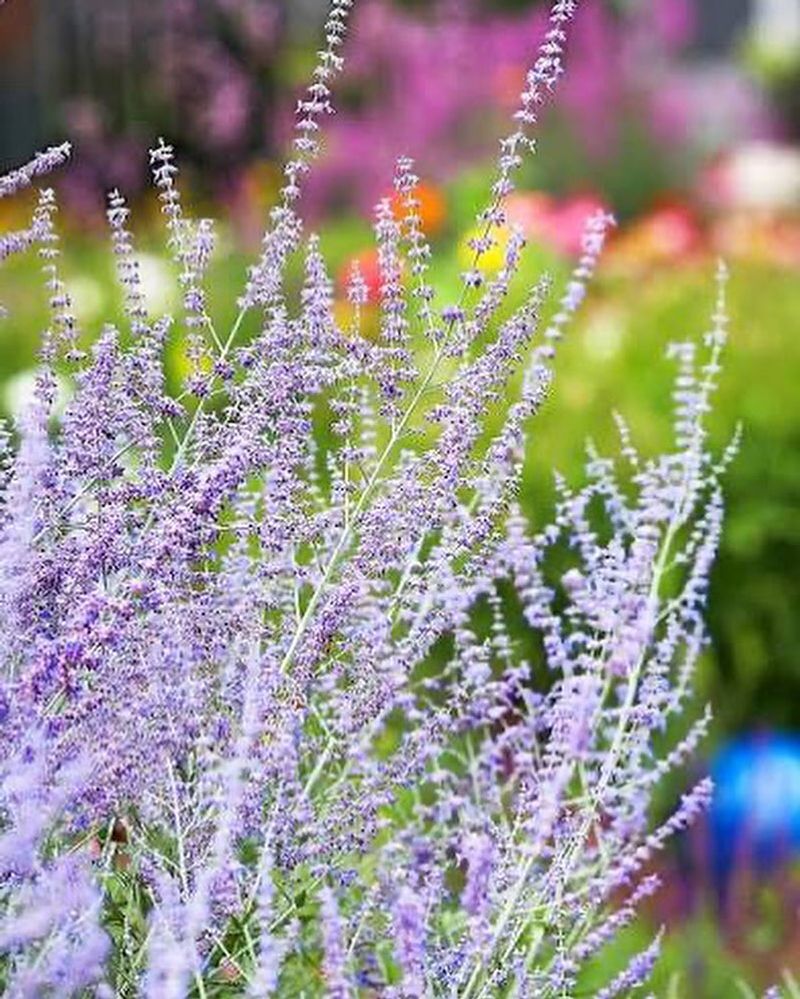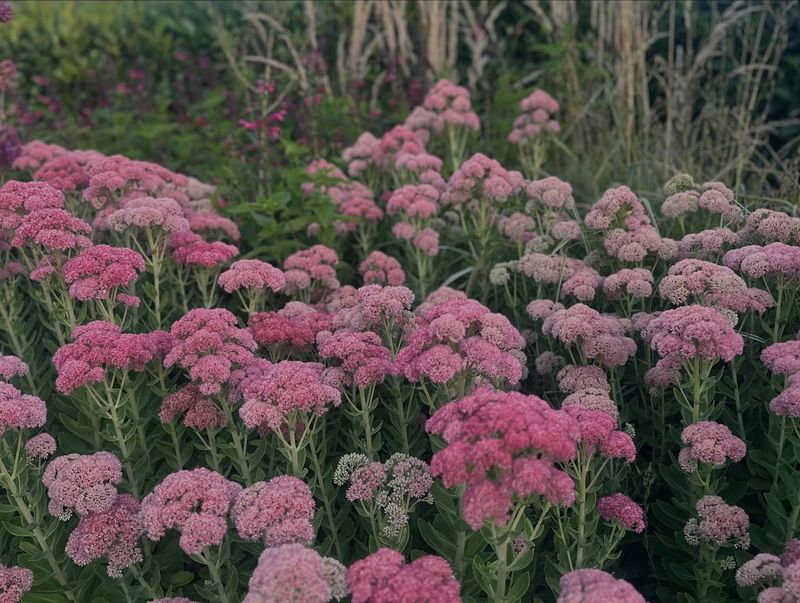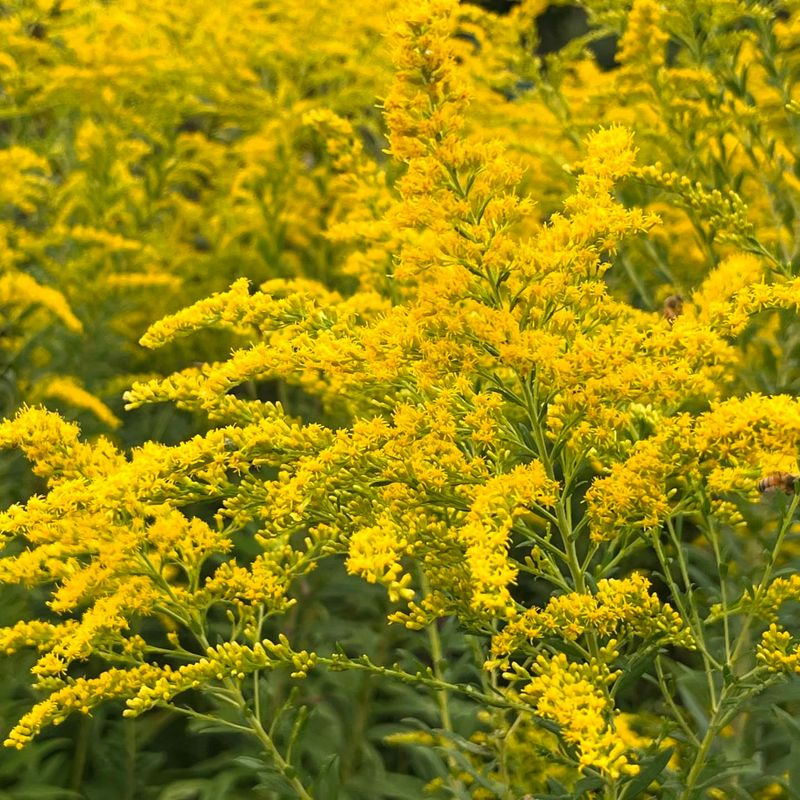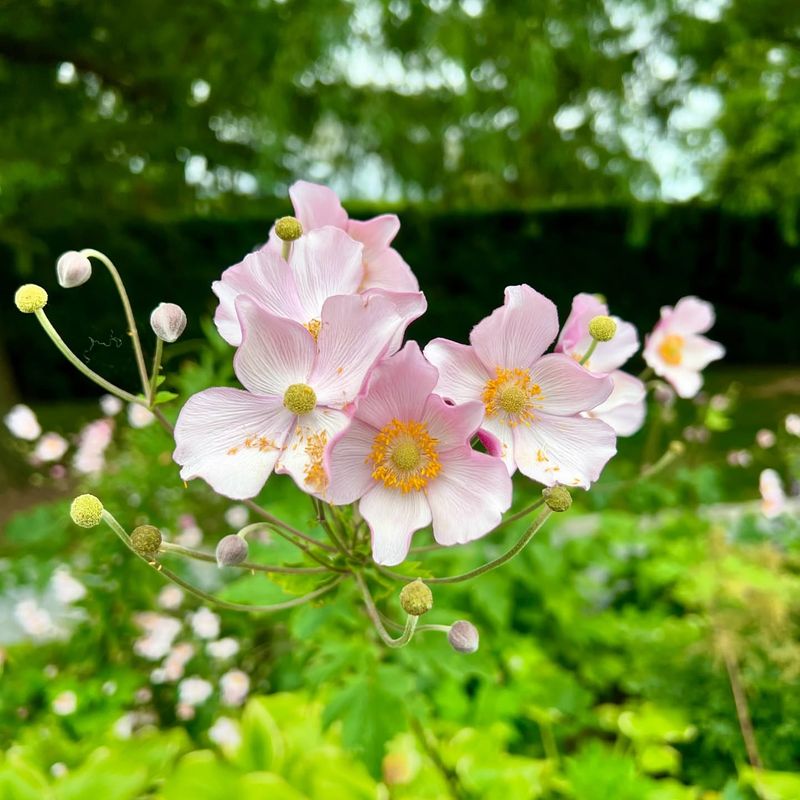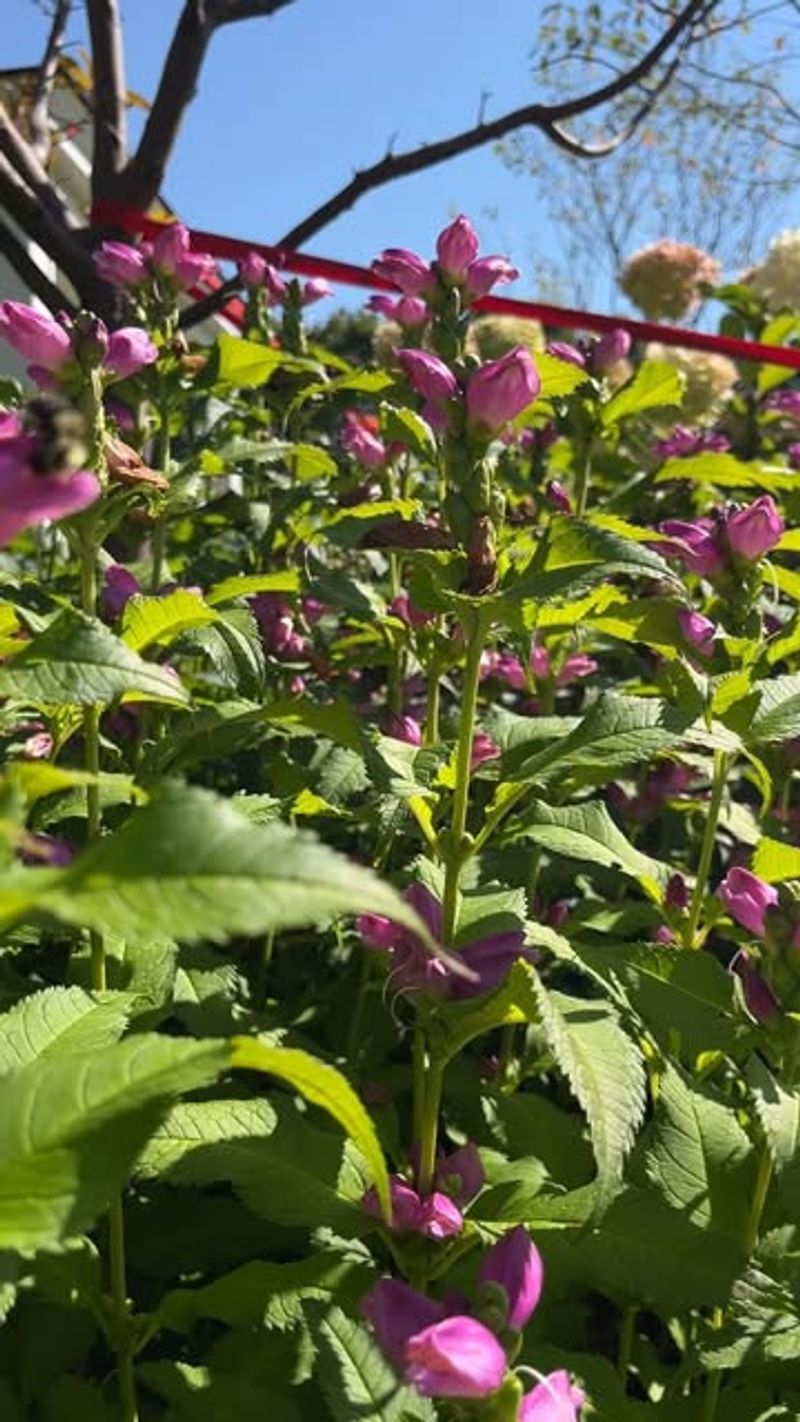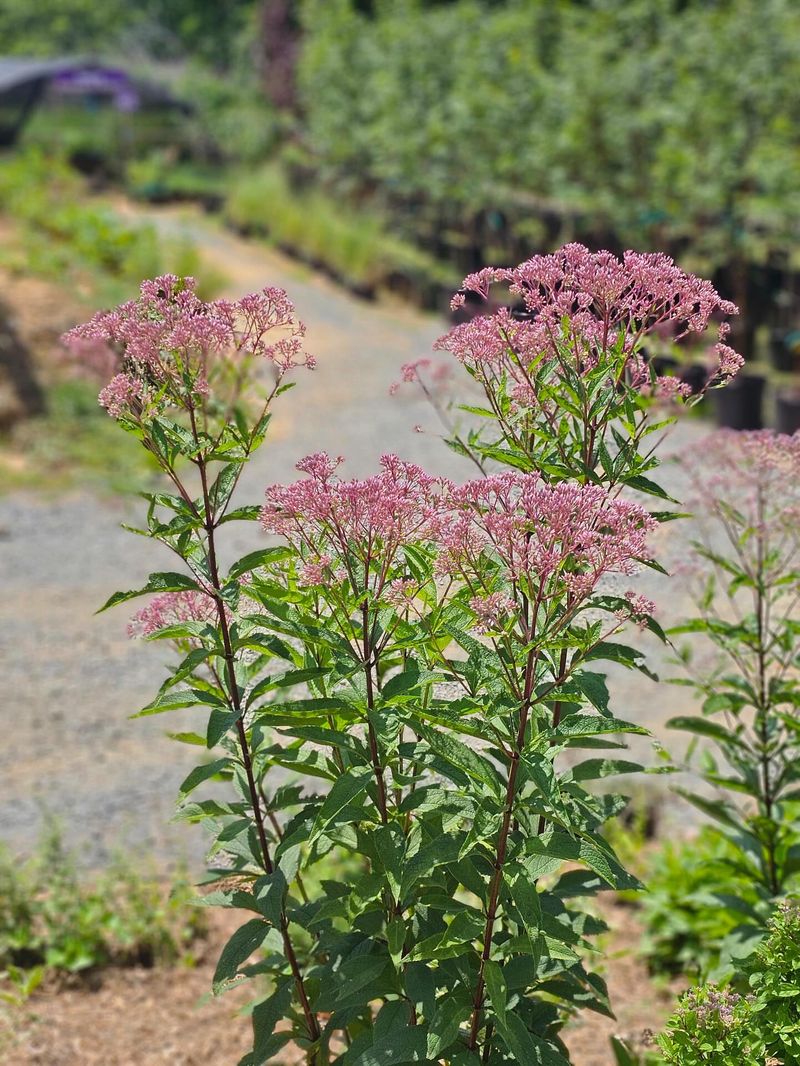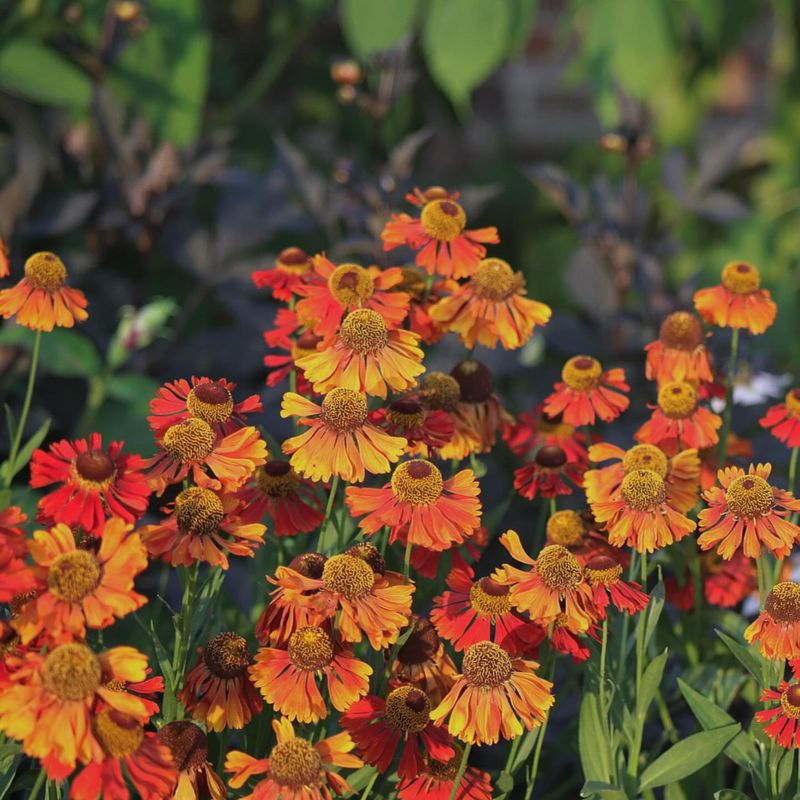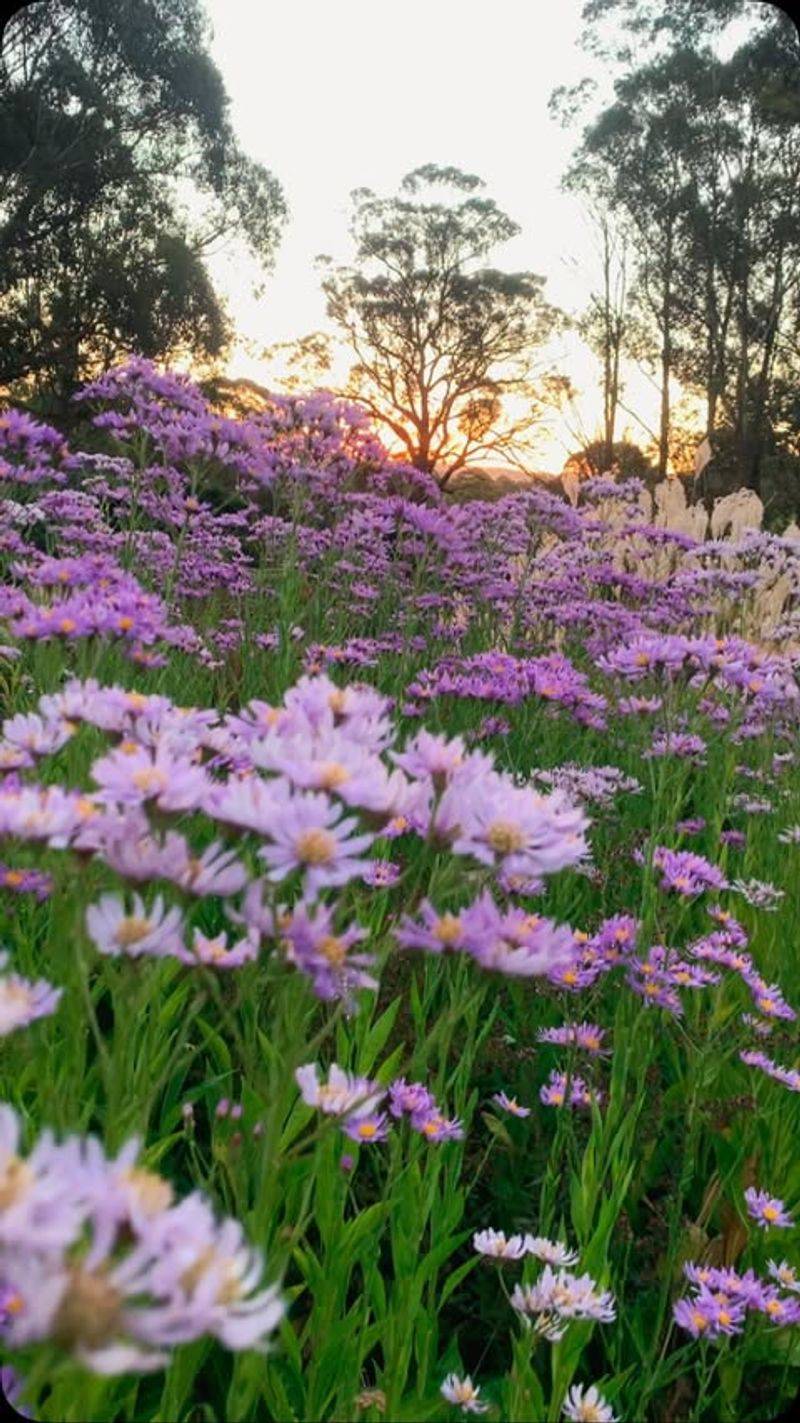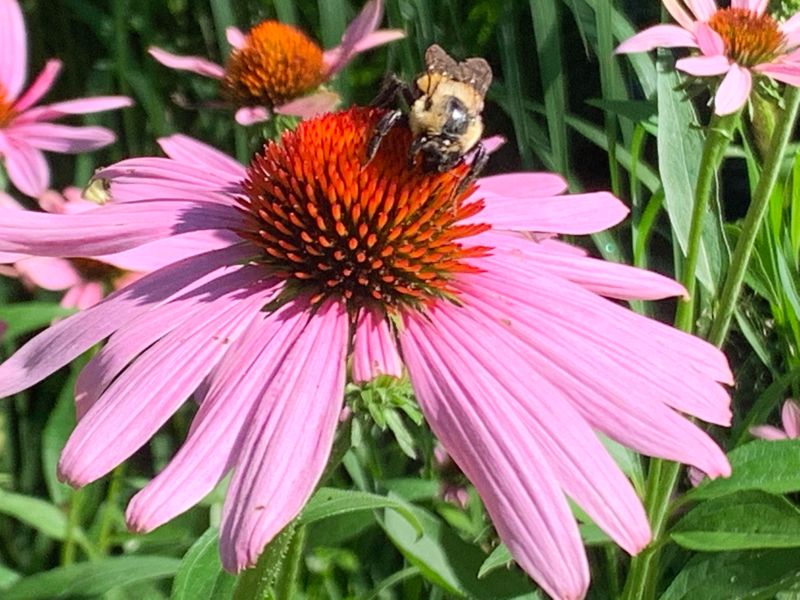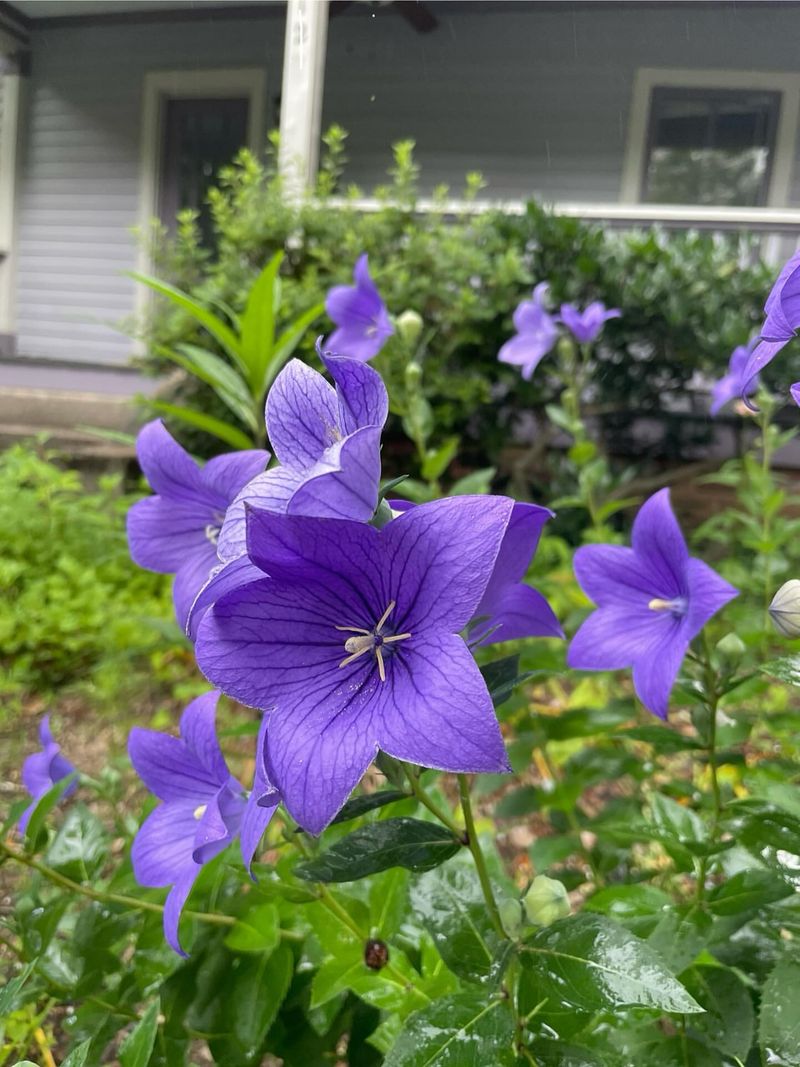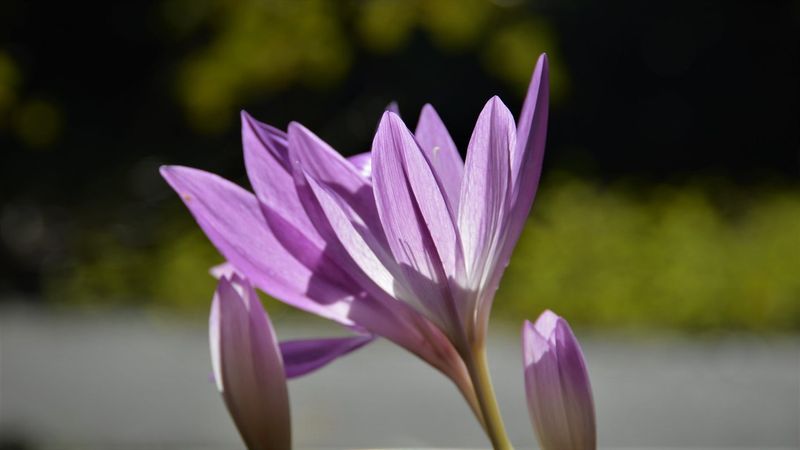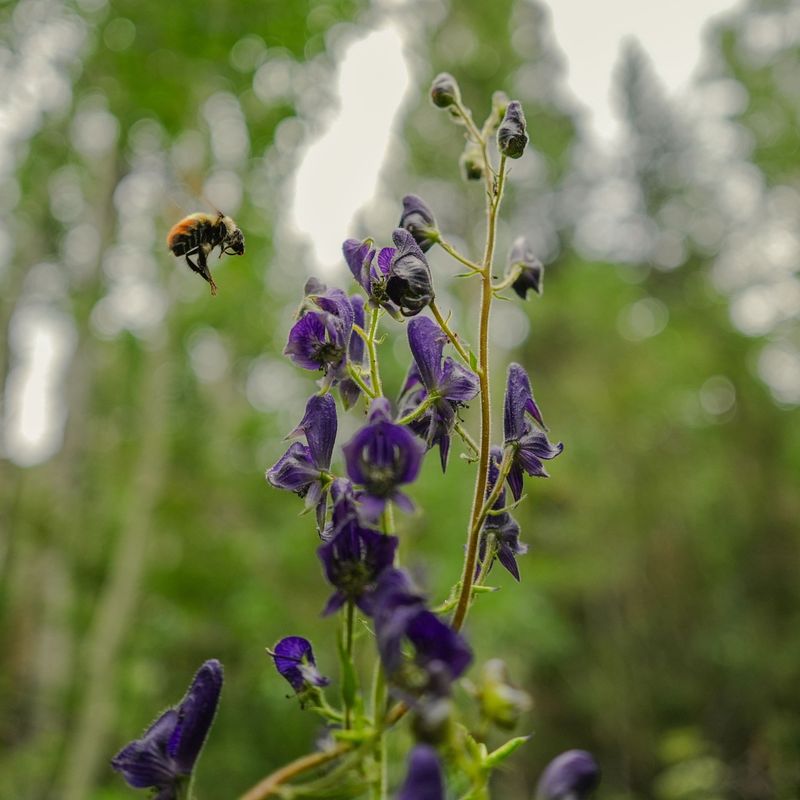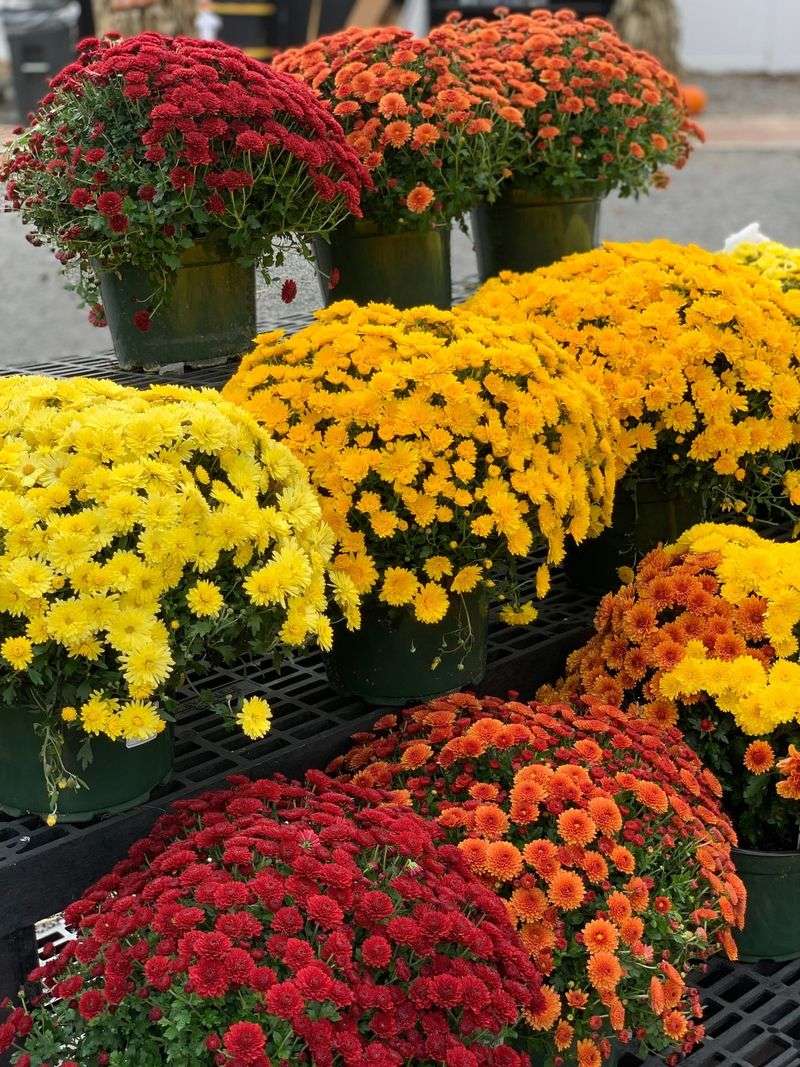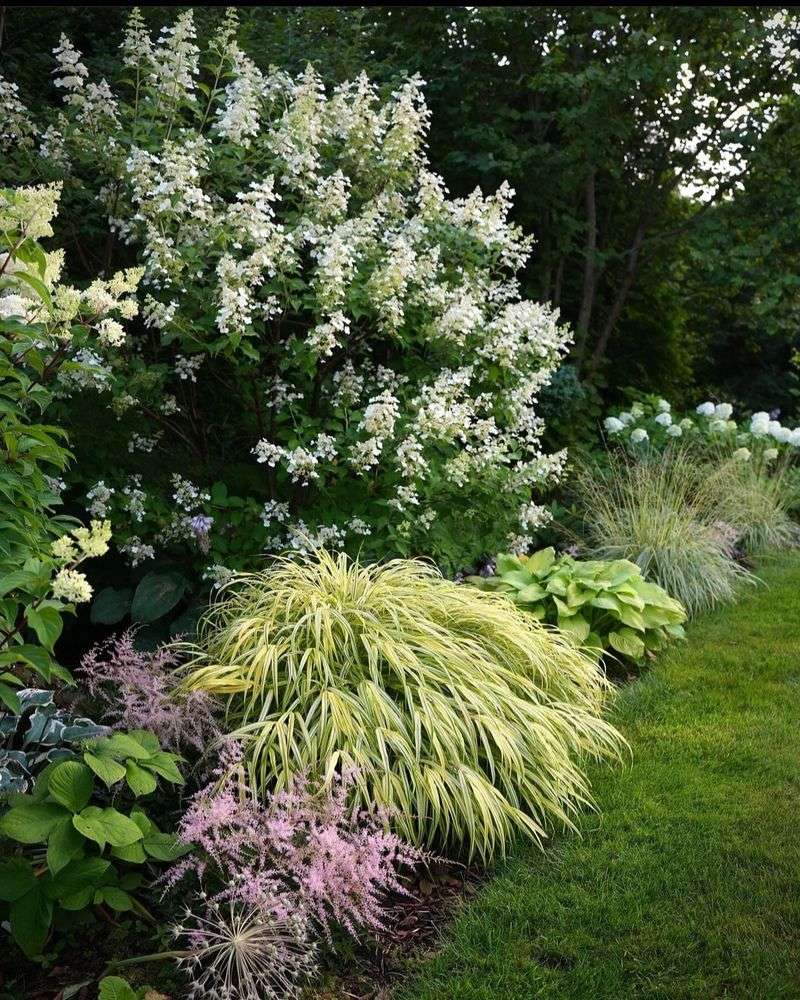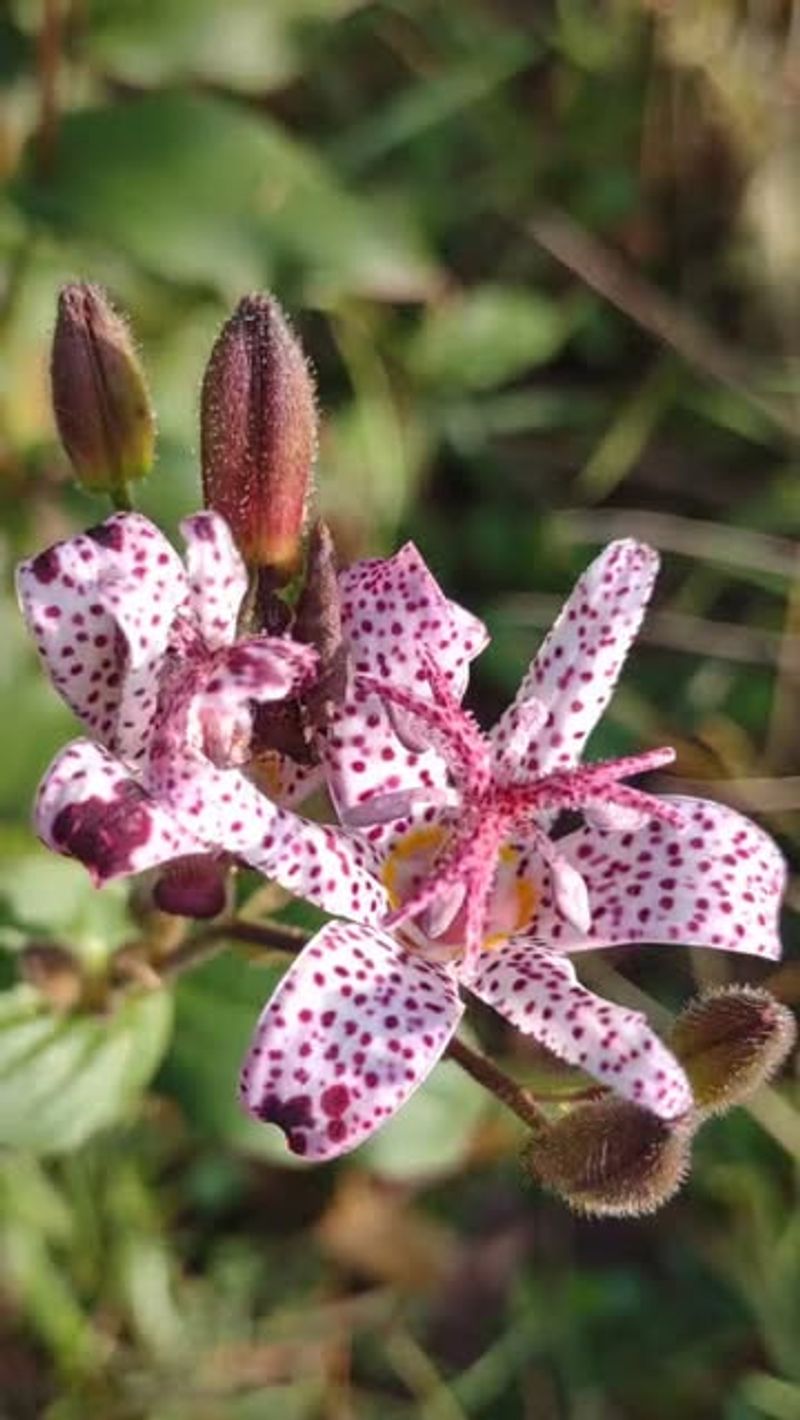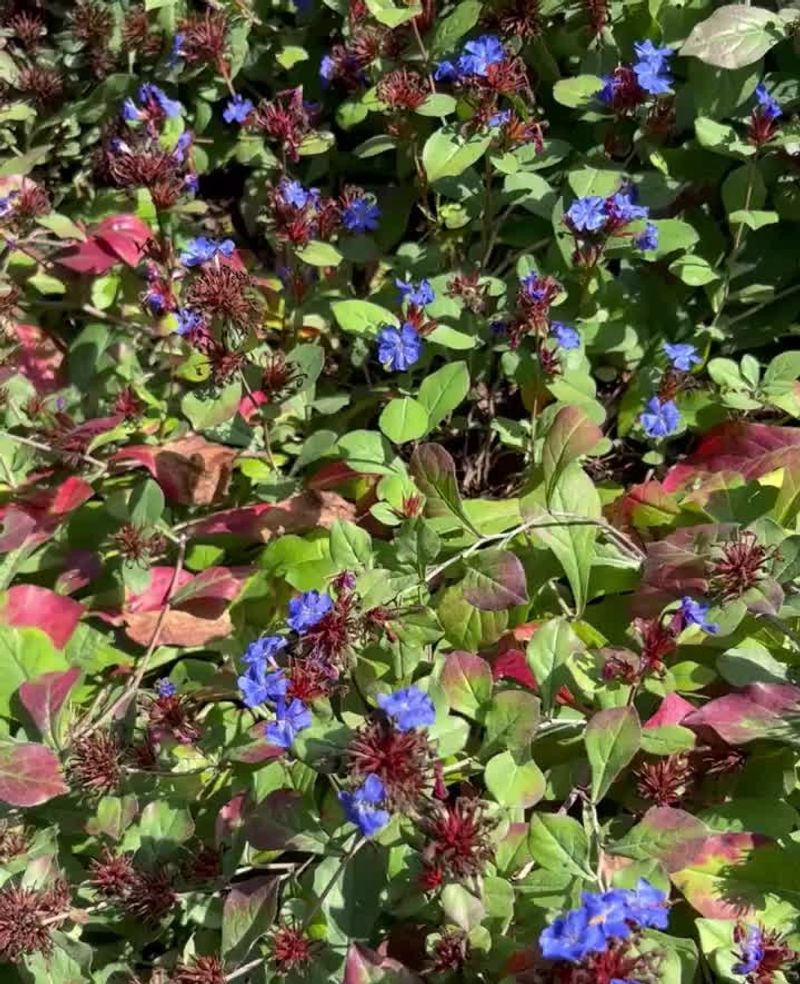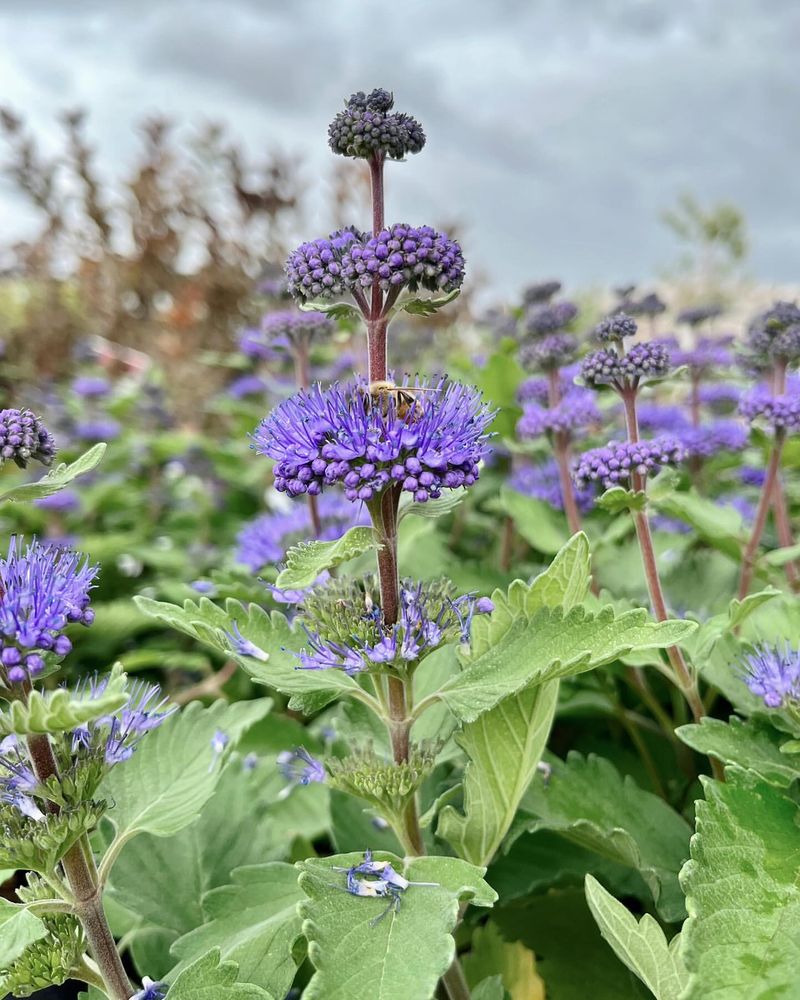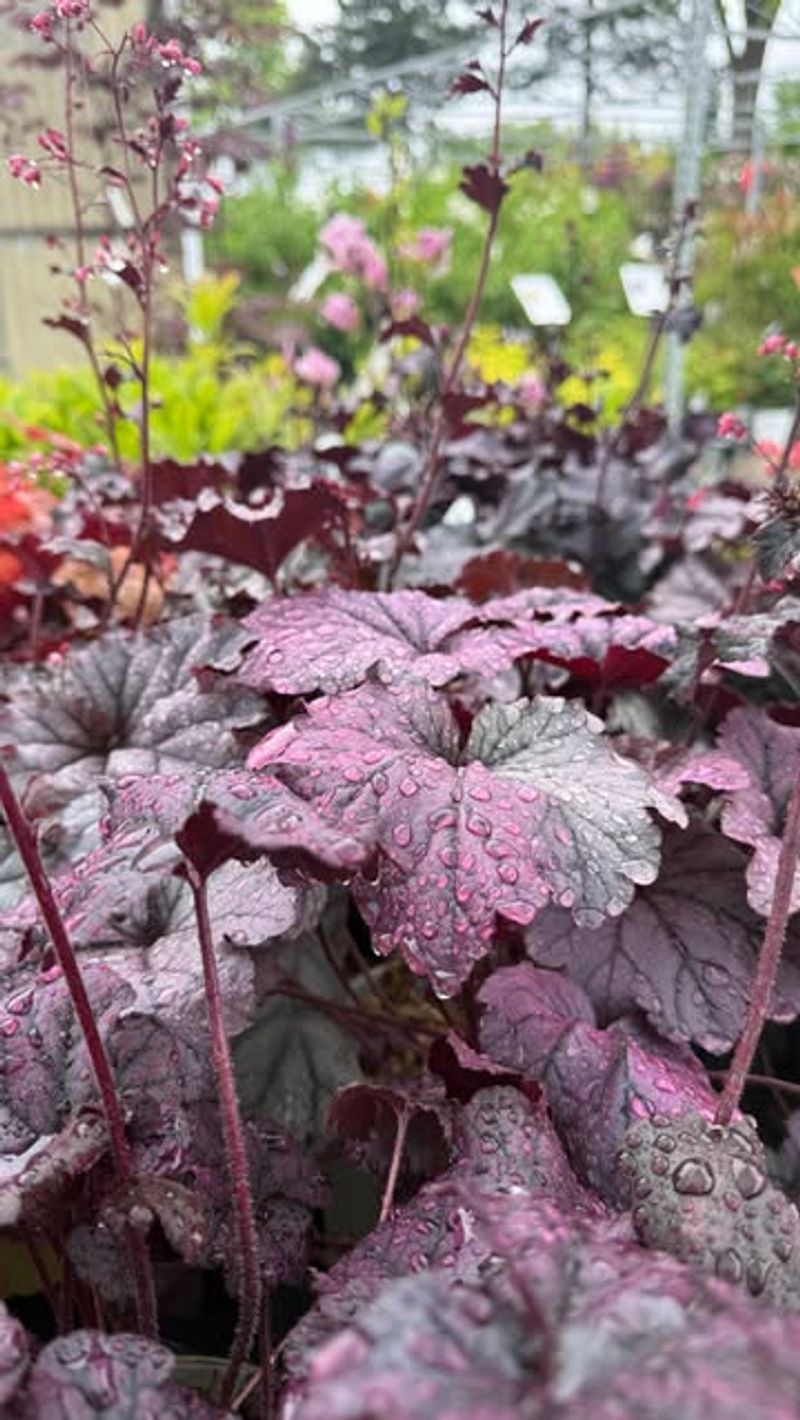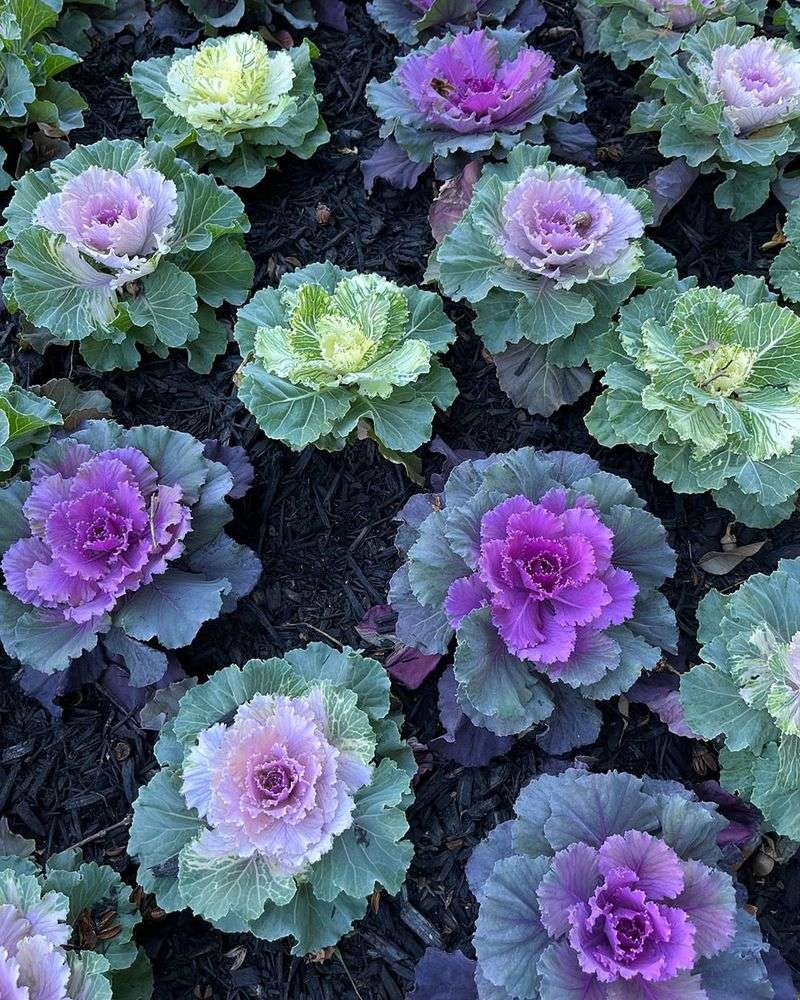North Dakota gardeners know the struggle of maintaining colorful landscapes as summer fades and fall approaches. Just when most flowers are calling it quits, late-blooming perennials step in to save the day.
These hardy plants bring vibrant colors and fresh blooms when gardens typically start looking tired, extending the growing season well into autumn despite North Dakota’s challenging climate.
1. Russian Sage
Russian sage stands tall with its silvery-blue spires reaching 3-4 feet high in late summer gardens. The aromatic foliage releases a pleasant scent when brushed against, adding another dimension to your garden experience.
Extremely drought-tolerant once established, this perennial thrives in North Dakota’s sometimes harsh conditions. Bees and butterflies flock to its tiny lavender-blue flowers that persist well into October, providing late-season nectar for pollinators preparing for winter.
2. Autumn Joy Sedum
Gardeners cherish Autumn Joy for its remarkable color transformation. Starting with pale pink blooms in late summer, the flower heads gradually deepen to rich rusty red by fall, creating a stunning visual evolution in your garden.
Flat, plate-like flower clusters serve as landing pads for butterflies and bees. The succulent foliage remains attractive throughout the growing season, requiring minimal care while standing up to North Dakota’s dry spells with remarkable resilience.
3. Goldenrod
Contrary to popular belief, goldenrod doesn’t cause hay fever – that’s ragweed’s doing! Native varieties like ‘Fireworks’ or ‘Little Lemon’ bring sprays of brilliant yellow blooms to the garden from August through October.
Perfect for prairie-style plantings, goldenrod attracts countless beneficial insects. The deep root system makes it incredibly drought-resistant once established, handling North Dakota’s challenging conditions with ease. Many varieties stay compact and well-behaved, unlike their wild roadside cousins.
4. Japanese Anemone
Graceful and ethereal, Japanese anemones dance on slender stems above attractive foliage. Their simple, poppy-like flowers in white or various pink shades appear just when most perennials have finished their show.
Thriving in partial shade, these elegant bloomers illuminate darker corners of North Dakota gardens through September and October. Once established, they form slowly expanding clumps that can be divided to spread throughout your garden.
5. Turtlehead
Named for their uniquely shaped flowers resembling turtle heads, these native perennials bring charm to late-season gardens. The pink or white blooms cluster on upright stems above rich green foliage from August through October.
Preferring consistently moist soil, turtleheads thrive along water features or in rain gardens. Their ability to bloom in partial shade makes them perfect for woodland garden edges in North Dakota. Deer typically avoid them, adding to their appeal for gardens in rural areas.
6. New England Aster
Bursting with vibrant purple, pink, or blue daisy-like flowers, New England asters create spectacular fall color. The star-shaped blooms with golden centers cover the plants from late August until frost, creating a magnificent display.
Native to North America, these sturdy perennials attract numerous butterflies, especially important for migrating monarchs. Their late-season pollen and nectar are crucial food sources for bees preparing for winter. In North Dakota gardens, they combine beautifully with ornamental grasses for authentic prairie charm.
7. Joe-Pye Weed
Don’t let the name fool you – this North American native is a garden superstar! Reaching impressive heights of 5-7 feet, Joe-Pye weed creates a dramatic backdrop with its mauve-pink flower clusters atop purple-tinged stems.
Butterflies absolutely adore the nectar-rich blooms that appear from late July through September. Compact varieties like ‘Little Joe’ fit smaller gardens while maintaining the same wildlife appeal. The seed heads provide winter interest and food for birds long after the flowers fade.
8. Helenium
Often called sneezeweed (though it doesn’t cause sneezing), helenium delivers fiery autumn colors reminiscent of a prairie sunset. The daisy-like flowers with distinctive raised centers come in warm yellows, oranges, and rich reds.
Blooming from August until frost, these upright perennials stand strong against North Dakota’s fall winds. Pollinators flock to the nectar-rich blooms when few other flowers remain. Deadheading spent flowers encourages continued blooming well into October, extending the garden’s colorful display.
9. Boltonia
Clouds of small, daisy-like flowers cover boltonia plants from late summer through fall. The delicate white or pale pink blooms with yellow centers create an airy, star-like effect in the garden, especially beautiful when backlit by evening sun.
Standing 3-5 feet tall yet rarely needing staking, boltonia’s sturdy stems withstand North Dakota’s notorious fall winds. The sheer number of flowers makes up for their small size, creating a spectacular mass display. Native to North America, it’s perfectly adapted to local growing conditions.
10. Coneflower Varieties
Modern coneflower breeding has created varieties that bloom well into fall, extending their season far beyond the traditional summer display. Newer cultivars feature unique colors like coral, orange, and even green, expanding beyond the classic purple.
Many newer selections rebloom without deadheading, providing continuous color from summer through frost. The sturdy stems stand up to North Dakota’s weather extremes. Even after the petals fade, the distinctive cone-shaped centers provide winter interest and seeds for goldfinches and other birds.
11. Balloon Flower
Children delight in watching balloon flower buds pop open! The inflated, balloon-like buds burst into star-shaped blue, white, or pink flowers. With deadheading, these charming perennials continue blooming from midsummer into early fall.
Compact growth habits make balloon flowers perfect for garden edges or container plantings. The flowers last well as cut blooms, bringing late-season color indoors. Their deep taproots help them withstand North Dakota’s dry spells while making them somewhat difficult to transplant once established.
12. Autumn Crocus
Seemingly appearing by magic, autumn crocus sends up leafless purple, white, or pink blooms directly from the soil in September and October. The flowers emerge months after the foliage has disappeared, creating a delightful surprise in the fall garden.
Unlike true crocuses, these are actually in the lily family (Colchicum). Their unique growth cycle – foliage in spring that dies back, followed by naked flowers in fall – makes them perfect companions for hostas or other perennials that can hide the fading spring leaves.
13. Monkshood
Monkshood earns its name from the distinctive hood-shaped flowers resembling a monk’s cowl. The deep blue-purple blooms appear on tall spikes from late summer through fall, providing rich color when many perennials have finished.
Thriving in partial shade, monkshood brightens woodland garden edges when few other plants bloom. Every part contains toxic compounds, making it naturally deer and rabbit resistant – a huge advantage in rural North Dakota gardens. The sturdy stems rarely need staking, even in windy conditions.
14. Hardy Mums
Forget those temporary potted mums from the supermarket! True hardy chrysanthemums return year after year in North Dakota gardens. Available in nearly every color except blue, these autumn classics create mounds of color from September until hard frost.
Early spring pinching creates bushier plants with more flowers. Unlike florist mums, hardy varieties develop extensive root systems that survive North Dakota winters with proper mulching. For maximum hardiness, plant in spring rather than fall to allow roots to establish before winter.
15. Japanese Forest Grass
While not flowering, this ornamental grass saves fall gardens with its brilliant gold and burgundy foliage transformation. The arching, bamboo-like leaves create cascading fountains of color that intensify as temperatures drop.
Preferring partial shade, Japanese forest grass illuminates darker garden corners where few late bloomers thrive. The elegant, flowing form provides beautiful contrast to the upright habits of many fall perennials. In protected North Dakota gardens, it maintains its striking color until covered by snow.
16. Toad Lily
Exotic-looking orchid-like blooms speckled with purple dots make toad lilies garden conversation pieces. The unusual flowers appear along arching stems in September and October, bringing unexpected beauty to shady garden corners.
Despite their delicate appearance, toad lilies are surprisingly hardy in North Dakota when provided with consistent moisture and protection from harsh afternoon sun. The spotted flowers are best appreciated at close range, making them perfect near garden paths or seating areas where their intricate details can be admired.
17. Leadwort
Gardeners treasure leadwort (Ceratostigma) for its brilliant blue flowers that appear from late summer until frost. The true garden magic happens when autumn temperatures transform the green foliage to blazing red-orange, creating a spectacular blue and red color combination.
Growing just 6-10 inches tall, this low-spreading perennial makes an excellent ground cover or front-of-border plant. In North Dakota gardens, it benefits from winter protection but rewards with both late-season flowers and exceptional fall foliage color that few other perennials can match.
18. Bluebeard
Masses of powder-blue flowers cover bluebeard shrubs precisely when the garden needs a color boost. The aromatic gray-green foliage provides an attractive backdrop for the blue blooms that appear from August through October.
Often treated as a perennial in North Dakota, bluebeard may die back to the ground in winter but regrows vigorously each spring. The nectar-rich flowers attract numerous butterflies and bees when few other plants are blooming. Pair with yellow late bloomers like goldenrod for a striking color combination.
19. Heuchera (Coral Bells)
Valued primarily for their colorful foliage, many don’t realize that heuchera’s delicate flower stalks continue appearing into fall. The evergreen leaves in shades of purple, caramel, lime, and silver maintain garden interest long after flowers fade.
Modern varieties combine remarkable cold hardiness with stunning leaf colors and patterns. In North Dakota gardens, they thrive in partial shade, maintaining their vibrant foliage even as temperatures drop. The leaves often intensify in color with cooler fall temperatures, adding an extra dimension to autumn gardens.
20. Ornamental Kale
Bold, architectural and utterly distinctive, ornamental kale creates dramatic focal points in autumn gardens. The rosette-forming plants intensify in color after frost, developing rich purples, pinks, and whites against blue-green outer leaves.
Unlike most garden plants, ornamental kale actually improves with cold weather! The vibrant colors develop fully only after temperatures drop below freezing. In North Dakota gardens, these cold-loving plants often look their best in October and November when most other garden color has disappeared, persisting until buried by snow.


